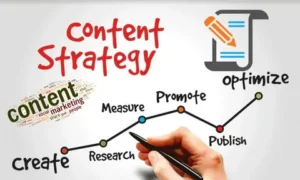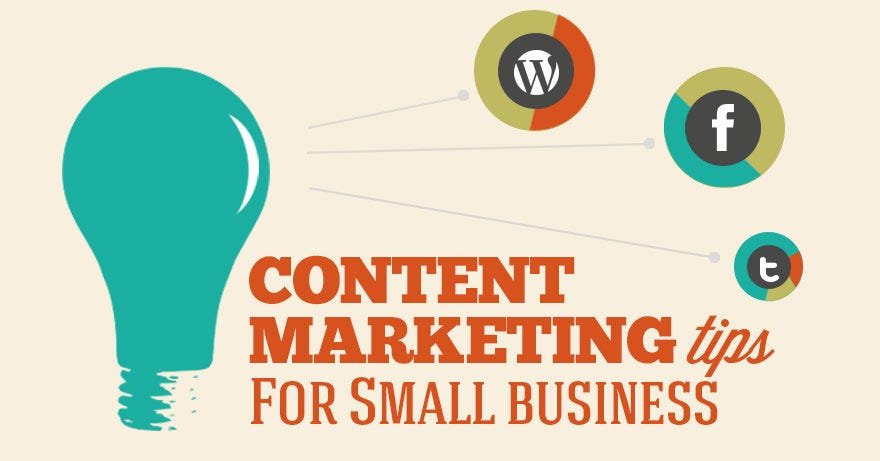Introduction
A robust content marketing strategy is critical for small businesses aiming to build brand awareness, engage customers, and drive sales. Without a clear strategy, businesses risk wasting resources, missing opportunities, and failing to connect with their target audience. This guide breaks down the problem of ineffective content marketing, identifies common causes, outlines consequences, and provides a step-by-step solution with real-world examples, tools, and preventive tips.
Breaking Down the Problem
Content marketing for small businesses involves creating and distributing valuable, relevant content to attract and retain a clearly defined audience. The problem of an ineffective strategy can be broken into smaller components:
-
Lack of Clear Objectives: Businesses often fail to define specific goals (e.g., brand awareness, lead generation, or customer retention).
-
Poor Audience Understanding: Content that doesn’t resonate with the target audience due to inadequate research or segmentation.
-
Inconsistent Content Creation: Sporadic posting or low-quality content fails to maintain audience engagement.
-
Limited Distribution Channels: Relying on a single platform or failing to optimize content for different channels.
-
Inadequate Measurement: Not tracking performance metrics to assess what works and what doesn’t.
Common Causes
-
Resource Constraints: Small businesses often lack the budget, time, or expertise to execute a comprehensive strategy.
-
Misaligned Priorities: Focusing on short-term sales rather than long-term brand building.
-
Lack of Knowledge: Not understanding content marketing best practices or tools.
-
Competitive Pressure: Struggling to stand out in a crowded market.
Consequences of Not Addressing the Issue
-
Low Brand Visibility: Failure to reach potential customers reduces market share.
-
Poor Customer Engagement: Irrelevant or inconsistent content leads to disinterest and churn.
-
Wasted Resources: Time and money spent on ineffective tactics yield minimal ROI.
-
Competitive Disadvantage: Competitors with stronger strategies capture the audience’s attention.
-
Missed Revenue Opportunities: Ineffective lead generation and conversion hinder growth.
Step-by-Step Solution: Building a Content Marketing Strategy
Step 1: Define Clear Goals and KPIs

-
Action: Set SMART (Specific, Measurable, Achievable, Relevant, Time-bound) goals for your content marketing. Examples include increasing website traffic by 20% in six months, generating 50 leads per month, or boosting social media engagement by 15%.
-
Tools/Resources:
-
Google Analytics: Track website traffic and user behavior.
-
SMART Goal Templates (available on Trello or Asana).
-
-
Example: A local bakery sets a goal to increase online orders by 10% in three months through blog content about unique dessert recipes.
Step 2: Understand Your Audience
-
Action: Create detailed buyer personas based on demographics, pain points, preferences, and behaviors. Conduct surveys, interviews, or analyze existing customer data.
-
Tools/Resources:
-
HubSpot’s Buyer Persona Tool: Free template to create personas.
-
Google Forms: Collect customer feedback.
-
Social media analytics (e.g., Instagram Insights, LinkedIn Analytics).
-
-
Example: A small fitness studio identifies its audience as busy professionals aged 25-40 who value quick, effective workouts. They create content like “10-Minute Home Workouts for Busy Professionals.”
Step 3: Develop a Content Plan
-
Action: Create a content calendar outlining topics, formats (e.g., blogs, videos, infographics), and posting schedules. Focus on content that educates, entertains, or inspires your audience.
-
Tools/Resources:
-
Trello or CoSchedule: Plan and schedule content.
-
Canva: Design visuals for social media or blogs.
-
Keyword Planner (Google Ads): Identify high-traffic keywords for SEO.
-
-
Example: A boutique clothing store plans a monthly blog series on “Sustainable Fashion Tips” and pairs it with Instagram Reels showcasing outfit ideas.
Step 4: Create High-Quality, Relevant Content
-
Action: Produce content that addresses audience pain points and aligns with your brand. Use storytelling, clear CTAs, and SEO best practices (e.g., keyword optimization, meta descriptions).
-
Tools/Resources:
-
Grammarly: Ensure polished, error-free content.
-
Yoast SEO: Optimize blog posts for search engines.
-
Lumen5: Create engaging videos from blog content.
-
-
Example: A tech repair shop publishes a blog post titled “How to Extend Your Laptop’s Lifespan” with a CTA to book a maintenance service.
Step 5: Distribute Content Across Channels
-
Action: Share content on platforms where your audience is active (e.g., Instagram, LinkedIn, email newsletters). Tailor content to each platform’s format and tone.
-
Tools/Resources:
-
Buffer or Hootsuite: Schedule social media posts.
-
Mailchimp: Create email campaigns.
-
Medium: Repurpose blogs for broader reach.
-
-
Example: A coffee shop shares a video tour of its roasting process on Instagram Stories, a blog post on its website, and a newsletter to subscribers.
Step 6: Measure and Optimize
-
Action: Track KPIs like website traffic, engagement rates, lead conversions, and ROI. Use insights to refine your strategy, focusing on high-performing content.
-
Tools/Resources:
-
Google Analytics: Monitor traffic and conversions.
-
Hotjar: Analyze user behavior on your website.
-
SEMrush: Track SEO performance and competitor strategies.
-
-
Example: A pet grooming business notices that “Pet Care Tips” blogs drive more traffic than product-focused posts, so they double down on educational content.
Case Study: Real-World Example
Business: GreenLeaf Landscaping, a small business offering eco-friendly lawn care.
-
Problem: Low online visibility and minimal leads despite a quality service.
-
Solution:
-
Goal: Increase website inquiries by 25% in six months.
-
Audience: Targeted homeowners aged 30-50 interested in sustainable landscaping.
-
Content Plan: Created a blog series on “Eco-Friendly Gardening Tips,” YouTube videos on DIY lawn care, and Instagram posts showcasing before-and-after projects.
-
Distribution: Used SEO to rank blogs, shared videos on YouTube and Instagram, and sent monthly newsletters via Mailchimp.
-
Results: Website traffic increased by 30%, inquiries rose by 28%, and social media followers grew by 15% in six months.
-
-
Key Takeaway: Consistent, audience-focused content across multiple channels boosted visibility and conversions.
Additional Tips for Prevention
-
Stay Consistent: Stick to a regular posting schedule to maintain audience trust.
-
Invest in Learning: Take free courses on content marketing (e.g., HubSpot Academy).
-
Leverage User-Generated Content: Encourage customers to share reviews or photos for authentic content.
-
Monitor Trends: Use tools like Google Trends or BuzzSumo to stay updated on industry topics.
-
Budget Wisely: Allocate resources to high-ROI channels first (e.g., email marketing often yields $42 for every $1 spent).
Next Steps and Call to Action
-
Start Today: Define one SMART goal for your content marketing this week.
-
Create a Persona: Spend 30 minutes researching your audience and drafting a buyer persona.
-
Plan One Piece of Content: Write a blog post or create a social media post to test your strategy.
-
Track Results: Set up Google Analytics to monitor performance from day one.
-
Take Action Now: Visit https://hubspot.com or https://mailchimp.com for free tools to kickstart your strategy. Don’t wait—every day without a strategy is a missed opportunity to grow your business!
